What to Know Before Treating Shoulder Calcific Tendonitis
Facing a medical procedure can bring on a mix of curiosity and concern—especially if it’s something you’ve never heard of before, like barbotage. If your shoulder specialist has recommended this technique to treat calcific tendonitis, you’re on a proven path toward pain relief and restored movement.
This guide is designed to walk you through everything you need to know before your barbotage appointment—so you can show up confident, informed, and ready.
What Is Shoulder Barbotage?
Barbotage is a minimally invasive outpatient procedure used to treat calcium deposits in the rotator cuff, particularly in the supraspinatus tendon. These deposits can cause pain, stiffness, and limited range of motion. (See Understanding Barbotage)
During barbotage:
- A needle is inserted into the deposit under ultrasound guidance
- Saline is flushed into the area
- Loosened calcium material is suctioned out
- A corticosteroid injection may be added to reduce inflammation
The entire procedure typically takes under an hour and is done under local anesthesia, meaning you stay awake but won’t feel pain.
Before the Procedure: What Patients Need to Know
1. Understand Why You’re Having Barbotage
Barbotage is usually recommended when:
- You’ve had shoulder pain for weeks or months
- Imaging shows calcium deposits
- Other treatments like physical therapy, NSAIDs, or steroid injections haven’t helped
Your specialist has determined this is the next best step to restore shoulder function and ease discomfort.
2. Discuss Medications with Your Doctor
Some medications can affect the procedure, including:
- Blood thinners like aspirin, warfarin, or Plavix
- Anti-inflammatory drugs (NSAIDs)
- Diabetes medications, which may interact with corticosteroids
Action step: Make a complete list of your medications and share it with your doctor well before your appointment.
3. Know What to Wear and Bring
- Loose clothing or a top that opens at the front is ideal.
- Leave jewelry at home.
- Bring someone with you if possible, especially if you’re anxious or unsure how you’ll feel afterward.
You will be able to drive home, but it’s always helpful to have company.
4. Fasting Is Not Required
Since barbotage uses local anesthesia, you don’t need to fast beforehand. Eat normally unless your doctor gives specific instructions to the contrary.
5. Inform Your Doctor About Allergies or Sensitivities
If you have any history of reactions to:
- Lidocaine or other anesthetics
- Steroids
- Latex (used in gloves or certain equipment)
…make sure your care team knows in advance.
6. Prepare for Minor Post-Procedure Downtime
You won’t be in bed for days, but you’ll want to:
- Take it easy for 24–48 hours
- Avoid lifting or overhead activity
- Use ice packs to reduce swelling or soreness
Your shoulder specialist will give you a post-procedure care plan to follow at home.
7. Physical Therapy May Be Recommended
Ask if you’ll need physical therapy after barbotage. Many patients benefit from a structured rehab program to:
- Restore motion
- Strengthen shoulder muscles
- Prevent calcium recurrence
You may be asked to start gentle exercises within a week of the procedure.
Day of the Procedure: What to Expect
- Check-in: You’ll complete a few brief forms
- Ultrasound imaging: Used to locate the deposit
- Local anesthesia: Numbs the skin and surrounding area
- Procedure: The flushing and aspiration process begins
- Optional steroid injection: To minimize post-procedure inflammation
- Dressing applied: A small bandage covers the site
- Observation: You’ll be monitored for 15–30 minutes before being released
The whole visit may last 60–90 minutes, including prep and observation.
Questions to Ask Before Barbotage
- How large is my calcium deposit?
- Will a steroid injection be used?
- When can I return to work or exercise?
- Will I need follow-up imaging?
- What should I expect in the first 48 hours?
Your specialist will appreciate an informed patient—don’t hesitate to ask!
Barbotage is a safe, low-risk, and effective solution for calcific tendonitis of the shoulder. Preparing well means fewer surprises, smoother recovery, and a better overall experience. By following these guidelines and staying in close communication with your specialist, you’re giving yourself the best chance at a quick return to pain-free movement.
FAQs: Preparing for Shoulder Barbotage
1. Can I drive myself home after the procedure?
Yes, since only local anesthesia is used, but you may feel more comfortable having someone accompany you.
2. Will I need to take time off work?
Most people return to desk jobs within a day. If your job involves heavy lifting or shoulder use, a few days of rest may be advised.
3. Is there any downtime after the procedure?
Mild soreness is common, but most patients resume normal activity (excluding strenuous shoulder movements) within 48 hours.
4. Should I stop my medications before the procedure?
Only if advised by your doctor. Always share a full list of medications beforehand.
5. Do I need to bring anything to the appointment?
Bring your ID, insurance card, a list of medications, and any questions you have. Dress in easy-access clothing.
The information in this article is for educational purposes and Dr Kruse may recommend alternate treatment options to best address the individual patient’s needs.
